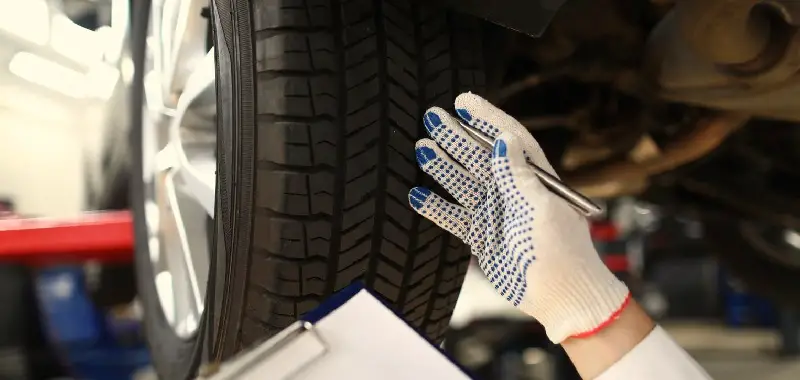Understanding the UTQG System

Selecting the right set of tires for your vehicle is a crucial decision that affects your safety and driving experience. The National Highway Traffic Safety Administration (NHTSA), a branch of the United States Department of Transportation (US DOT), developed a tool back in the 1970s to assist tire buyers in making informed decisions.
Known as the Uniform Tire Quality Grade (UTQG) standards, this system measures three significant aspects of tires: tread wear, traction, and temperature.
What is UTQG?
The UTQG rating system is designed to provide consumers with valuable information about the performance characteristics of tires.
Though all passenger tires in the US should carry UTQG ratings, some, like snow/winter tires, deep-tread light truck tires, run-flats, and certain other tires, are exempt. Also, tires like trailer and other utility ones aren’t mandated to be UTQG rated.
Does UTQG Treadwear Rating Matter?
The treadwear rating in UTQG signifies how long a tire might last under normal driving conditions, based on comparison with a control tire (rated at 100).
A tire rated 400 is expected to wear four times longer than the control tire. This rating often influences consumers’ purchase decisions, but it is crucial to understand the limitations.
Despite the testing process, in which tires are driven 7,200 miles and compared against a control group, the treadwear rating can’t precisely estimate how many miles a tire will last.
Inconsistent test parameters, such as different base tires for different manufacturers, make the comparison not necessarily an apples-to-apples one. Moreover, manufacturers self-report their ratings, which could potentially lead to discrepancies.
So, while the treadwear rating gives some idea about the lifespan of a tire, it doesn’t definitively indicate the tire’s quality. For a more reliable assessment, consumers should also consider tire warranties and other consumers’ reviews.

What is a Good Treadwear Rating?
According to the NHTSA, only 15% of tires have a treadwear rating below 200, and these are typically used for racing or specific, limited applications.
About 25% of tires have a rating of 201 to 300, 32% fall in the 301 to 400 range, 20% are rated 401 to 500, 6% are rated 501 to 600, and just 2% have ratings above 600. Combined with the tire’s intended use, these ratings can help guide consumers toward the right choice.
What UTQG Temperature Ratings Mean?
Temperature ratings, categorized as A, B, or C, measure a tire’s resistance to heat. Tires with an A rating, accounting for 62% of all tires in the US, are safe for speeds over 115 mph.
B-rated tires are safe between 100 and 115 mph, while C-rated tires are safe between 85 and 100 mph. The ability to resist heat is crucial for maintaining safety at high speeds.
What UTQG Traction Ratings Mean?
Traction ratings (AA, A, B, or C) indicate a tire’s ability to stop a vehicle on wet pavement. The higher the grade, the better the tire’s stopping ability.
While 15% of tires have an AA rating, 75% carry an A rating, and 7% are rated B. A meager four lines of tires have a C rating, typically racing tires not intended for general consumer driving or everyday use.
Conclusion
While UTQG ratings offer valuable insights, they are not a complete picture of a tire’s performance or quality. A higher UTQG rating suggests better performance, but it’s essential to consider the specific needs and conditions in which the tires will be used.
For instance, if you don’t drive your vehicle hard or put many miles on it, a tire with a lower UTQG treadwear rating might suffice. However, if you commute long distances or enjoy weekend road trips, you’ll likely prioritize handling, reduced road noise, and expected treadwear.
If you own a sports or high-performance vehicle, you might opt for tires that align with an aggressive driving style, sacrificing treadwear for grip and handling.

